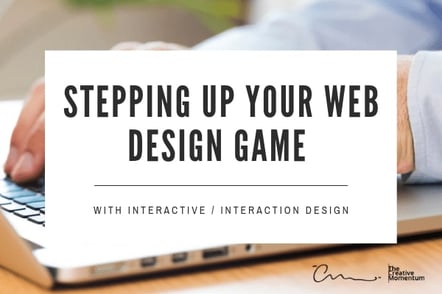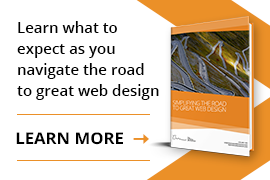
Once upon a time, the internet was so new that developing a website meant fighting against the constraints of slow load times and limited coding options. In fact, the early days of the internet left us with garish and clunky websites that were far from user-friendly. And the idea of a “beautiful website” was such a limited concept that it is part of the reason that minimalist sites like Google were considered ahead of the curve and intuitive.
Fast forward to 2019 and interaction design is a major focus in the graphic and web design world. It’s so common that even Google leverages the medium throughout its product portfolio and even their Google Doodles. So, how can you capitalize on interaction design to make your website dynamic and appealing?
What is Interaction Design?
First, let’s define this concept. Interaction or interactive design is a dynamic website where your visitors are able to engage with the site rather than being passive receivers of information. Interaction design is ideal for businesses that want to focus on capturing a customer’s attention and ultimately keep them on their site for extended periods of time.
While some people believe that any immersive site can fall under the category of interactive design, some experts state that the interactions you create have to be relevant and contribute to achieving your business goals. But most importantly, interaction design relies heavily on UX principles to create a website that’s intuitive and easy to use.
What Do You Need for Successful Interaction Design?
Like we mentioned earlier, creating an interactive site that’s user-friendly means you need to pay special attention to UX and ensure that it’s supporting your goals. For example, if you’re creating a site that’s meant to help people on the go, you should focus on mobile and tablet browsing optimization.
And by extension, you need to make sure that any additional animations, movements, or design elements don’t just look nice but help visitors understand how they’re supposed to interact with your site. With this guiding concept in mind, pay attention to the five dimensions of interaction design.
1D: Words
Text is a major component for UX and, by extension, interaction design. Ambiguous, hard-to-read content isn’t interactive and will have the opposite effect of driving traffic away.
- Is your content clear and easy to read?
- How is the tone? Does it match your target audience?
- Are text blocks too long?
- Would bullet points be a better way to display information?
2D: Visual Representations
By default, most people are visual learners. It’s easier to consume information via visual cues rather than reading long blocks of text. So, whenever possible, relying on graphics or visual design to support your CTA and site’s purpose is the smarter option.
- Do your graphics complement your overall layout?
- Is it easy for users to understand how to navigate through your site?
- Can you replace text with icons or avatars that offer a cleaner aesthetic?
- Are the images on your site the correct resolution, and are they relevant to your business and goals?
3D: Physical Objects or Space
This dimension refers to placement. In addition to being visual learners, most people are instinctively drawn to symmetry. Sites that fail to focus on this aspect can appear asymmetrical and feel cluttered or confusing to navigate.
- Are there inconsistent spaces between text blocks or graphic elements?
- Does your website maintain a consistent experience across devices?
- If your website is meant to be used on the go, is it user-friendly enough that someone can use it with only one hand on their mobile phone?
4D: Time
This might feel like the most abstract dimension for interaction design, but in this scenario, time refers to more than just how long a person stays on your site. In this capacity, “time” references how the user experience feels for the visitor.
- If you have a site that loads slowly, do you have a compelling animation to serve as a distraction to pacify users? Without this, slow load times can lead to page abandonment.
- If you’re creating a site that’s meant for people to visit frequently, is there something built in to help users track their time or pick up from where they last were?
5D: Behavior
Behavior refers to how users feel when interacting with your site. Is it a breeze to move through your sales cycle, or are there built-in roadblocks that lead to frustration?
- Before launching your site, test drive it with an informal focus group to gather feedback and make adjustments as needed.
- If you’re already live, pay attention to customer feedback and take note of common complaints so you can make corrections.
Interaction design can sound like an overwhelming concept when you first hear it. But at its core, the principle focuses on creating intuitive website experiences that help to prove your business’s value for your customers and build loyalty. For a more in-depth look at interaction design, along with a more thorough discussion of best practices and real examples, check out this crash course article. Whether you already have an idea of how you want your website to be or need a bit of expert input, The Creative Momentum’s experienced designers can help you bring your vision to life.


